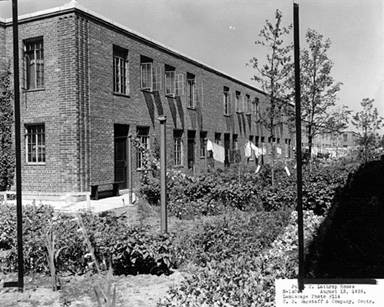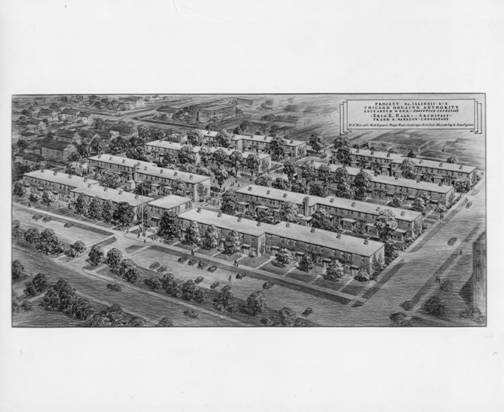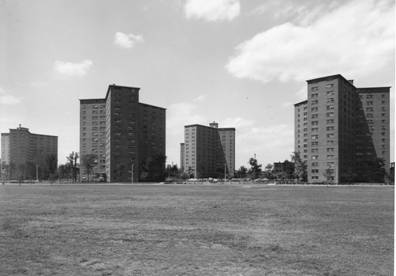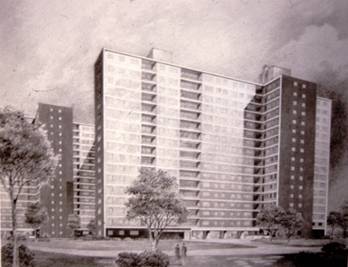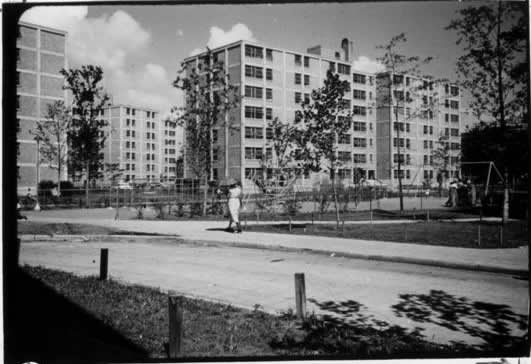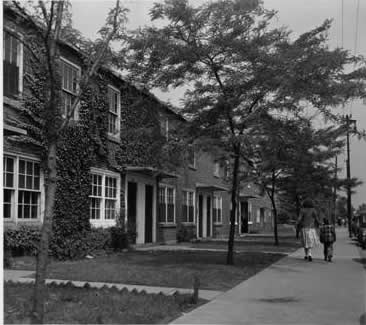
In examining the political and social history of public housing in Chicago, we have investigated the reformers’ goals, visions, and questions of whom to serve. By focusing on the architectural history of the projects, we can examine and evaluate the CHA’s logistical solutions. To address properly the history of Chicago public housing architecture, we must extend our focus beyond the end of World War II into the 1950s, as the CHA moved from constructing low-rise apartments, and row houses in the 1930s and early 1940s, to high-rise apartment buildings.
In the CHA Reports to the Mayor and marketing documents, we can see that assuring sufficient private and public space within the housing projects was a major CHA goal for projects. Such goals led the CHA to build homes that resembled the experience of home owners with low population density and picturesque exteriors with lush vegetation. Faced with long tenant waiting lists and budgetary constraints, the CHA began to move in a different direction.
Industrial production in support of the American war effort drew thousands of new families to Chicago in the early 1940s, further increasing the need for housing. A burgeoning population, competition between the CHA and private investors for vacant land, and strict federal regulations on construction costs led the CHA to experiment with higher population density units. From the mid-1940s, high-rise developments dominated Chicago public housing for decades. Many historians attribute some of public housing’s failures to these giant structures.
Use the National Archives Photo Analysis Worksheet and the questions below to analyze the following photographs and sketches.
- How might communities in low population density housing differ from those of high-rise buildings? What influence, if any, might building aesthetics have on the populations living in public housing?
- Contrast the public spaces evident in the first three photographs to the last three. How are these differences significant?
- How might the variation in public spaces alter the community?
- What are the advantages and disadvantages to living in the different styles of buildings?
- Studying architectural sketches provides an opportunity for historians to gauge the goals and vision of the developers. What can we determine about the CHA’s vision of the projects from the artists renderings of plans for public housing developments?
Questions about this page?
Questions about this page?
Director Center for New Deal Studies
